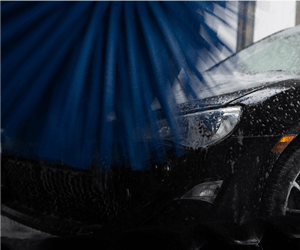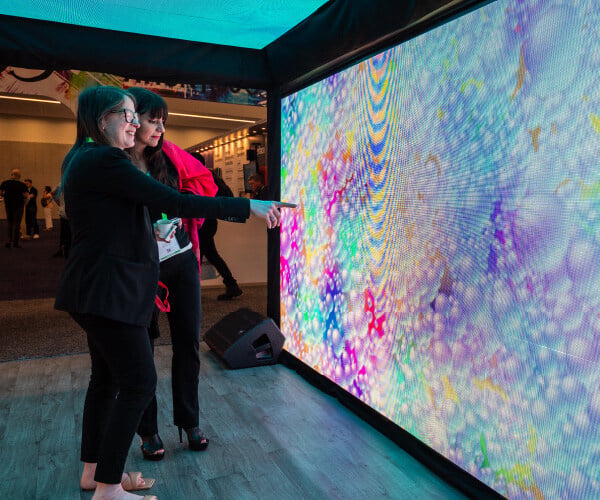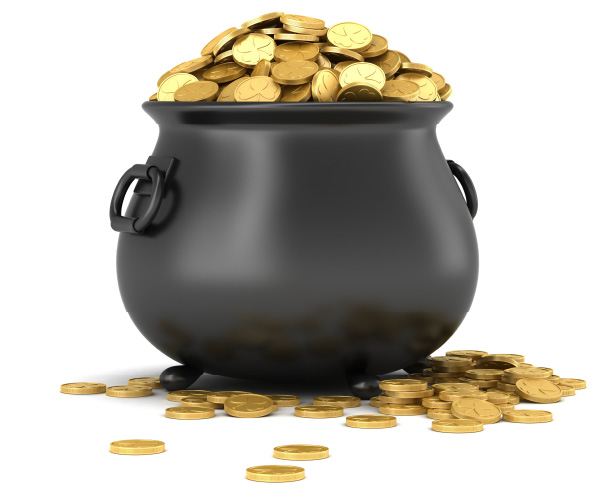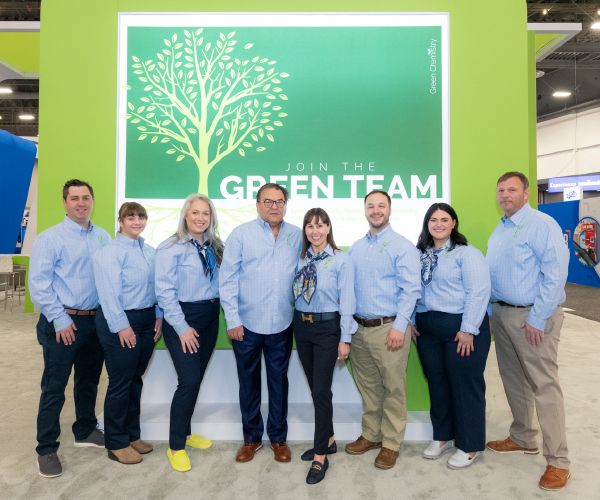
Future of Auto Design Takes Shape
April 1, 2012
8 minute ReadIf the design team at Hyundai has its way, a feature usually reserved for high-end cars such as Mercedes, Audis and Lamborghinis will become common on more affordable vehicles, posing a potential challenge for car wash operators.
Matte paint finishes, sometimes referred to as “flat paint,” aren’t shiny like traditional paint finishes and reflect very little light, creating an effect that Erwin Raphael, Hyundai’s director of engineering and quality, describes as “cool, aggressive, different and distinctive.”
Matte paint finishes are easily damaged by wax, however, making it imperative that car manufacturers and car wash operators communicate with customers about that risk.
Raphael said most of the trends in auto design won’t affect car wash operators, but the increasing popularity of matte paint finishes might force every car wash operator to put up a sign letting customers know that waxing these cars is a bad idea. And since car washes can’t wax these cars, the popularity of matte finishes could mean slightly less revenue for car wash operators.
“Wax will destroy matte paint,” Raphael said. “As we begin to see it in mass production of cars, there is a much bigger chance that someone will drive them to the car wash. We’re going to lead with matte paint, and I think many manufacturers will follow quickly, so I can envision seeing signage at every car wash.”
Raphael said Hyundai’s first car with a matte paint finish is the 2013 Veloster Turbo, available in matte gray. In the future, Hyundai might offer matte finishes in other colors such as black, and at the Specialty Equipment Market Association trade show in Las Vegas last fall, matte finishes were seen in the usual white, black and gray as well as olive green, burgundy, beige and blue.
“Matte paint finishes are non-glossy — about 15 to 20 percent gloss, as opposed to the 90 to 95 percent gloss that you’ll see on normal clear-coated vehicles,” Raphael said. “It gives the car a finish that to a novice might appear to be almost like a primer-looking finish. It’s really cool. This is going to be an industry-wide trend that the car wash industry is going to have to deal with.”
New Intense Colors
Some car companies aren’t as bullish on matte paint and have pursued other options to make their cars stand out.
Allen Brown, Ford’s advanced development and mastering manager, said his company is working with paint suppliers to develop new colors, and Ford has brought back tinted clear coats in some of its most popular hues, such as red candy. Typically, the clear protective coat that goes on top of the base coat has no tint to it, but a tinted coat can be used to make the color more eye-catching.
Brown said Ford’s tinted clear coats were popular in the 1980s but proved hard to maintain, so they were mostly sidelined until they re-emerged over the last few years.
“The addition of color to the clear coat makes it more intense,” Brown said. “We call it ‘chromatic.’ In the past, they wouldn’t hold their color quite as long, but now, with our newer testing specifications and materials, they’re just as durable as any other color on the road.”
Brown said Ford is also adding a new pigmentation to some of its colors called PVD, or physical vapor deposition. Many paints contain small pieces of shaved aluminum that add sparkle to the color, he said, but with PVD, the shavings are gasified and condensed into more minute particles that are added to the paint.
“We’re able to create very thin, flat and clear metal deposits, and when those go into the paint, they actually create a more dynamic sparkle,” Brown said.
Cars with tinted clear coats and PVD are no more likely to be damaged by car washes than other cars and might actually inspire more frequent trips to car washes. The optional paint packages usually cost customers from $299 to $499, Brown said, and most customers who are willing to pay more for a flashier car will want to keep it clean.
“The colors are so much better than they were 10 years ago, so if you don’t have a clean car, you’ll have less of an appreciation for that color,” Brown said. “The dirtiness of the car would dramatically reduce the appearance of these ultra-brilliant colors. The improved color that you’re paying for gives you an incentive to keep the car clean so you can show it off.”
Brown said Ford also is exploring the use of nanotechnology to create paints that are more robust and better able to repel dirt, though those advances are in the early testing phase. The idea is to create smaller paint particles packed more tightly together to create a smoother surface.
“Instead of having large particles that have gaps between them, you create many small particles that fill in all the cracks, so you have an ultra-smooth surface,” he said. “It’s something that we’re looking at, but paint is one thing we can never have fail, so anything we look at usually has a minimum of five years before it sees the light of day because we do such intense testing.”
Car Wash Considerations
Lon Zaback, Ford’s design manager, said his company does take car washes into account when designing cars, placing special emphasis on creating smooth surfaces with parts that line up flush so that no wash rags or car wash equipment gets snagged. Ford also tries to avoid creating deep grooves on parts such as wheels that would make them more difficult to clean.
“Designers by nature are car enthusiasts and are the kind of people who not only hand wash our cars but take our cars to car washes, so we’re aware of what is not going to work well in a car wash,” he said. “We’re aware that there are car wash specifications, and a lot of that gets baked in right from the beginning of the design process.”
Put to the Test
Hyundai and Ford subject their paints, metals and other exterior finishes to a host of tests both outdoors and in weatherometers, which are indoor testing facilities used to create a harsher climate than can be found outdoors.
The testing period can last as long as five years, and materials are subjected to high-pressure water sprays to mimic car washes and rainstorms, as well as sun, heat, cold, wind and interaction with detergents, salts and car wash bristles.
“We try to subject our materials to the worst-case scenario across the board,” Raphael said. “Do we run our cars through car washes? The answer is no because our tests are much more aggressive.”
What’s Next in Design?
Other than new paint finishes, car designers said there are few surprises ahead for car wash operators. New vehicles likely will be smaller, more aerodynamic and lighter as the industry develops new alloys, and fuel economy is the major driver behind those changes.
“I would say that vehicles will be as short in height as possible going forward,” said Greg Howell, chief of exterior design for Chrysler’s Ram Truck division.
“Aerodynamics are affecting the overall shape and proportion of vehicles — moving the windshield forward, using a bullet-style front end and a sheer rear design.”
“Aerodynamics are the biggest force behind design changes in cars and trucks. Full belly pans with heat shields for exhaust routing are trending. SUVs could feature additional devices mounted to the spoiler to take air off the back glass. These measures could affect the car wash industry because there will be more plastic or composite parts added to the vehicle as opposed to stamped in the sheet metal.”
Zaback said the car industry also has successfully changed the notion that a small car is a cheap car, and manufacturers are now better able to sell smaller cars with premium appointments, such as the Ford Fiesta’s new leather interior.
During the SUV craze of the 1990s, bigger equaled better in the United States, but in Europe, where gas prices are much higher, customers embraced small cars with top-notch features. Rising gas prices in the United States have helped that practice cross the pond, Zaback said.
“American consumers are now beginning to understand that a small car can be a premium car,” he said. “We were on a trend where we were getting larger and larger, and I don’t see that happening anymore.”
Other design changes include more panoramic sunroofs and low-profile wheels. Raphael said Hyundai has been installing larger glass sunroofs that cover most of the car’s top section. The large sunroofs typically consist of either one large piece of glass or two large pieces with a metal strip of structural support separating them. The one-piece sunroofs don’t open, but the two-piece units can slide open.
“Customers want cars that are brighter and feel more open, like they’re outdoors,” Raphael said. “You get the benefit of the light without the wind. Some people don’t like the sound of the wind rushing by, but they would like to have a large glass roof.”
Raphael also said approximately half of Hyundai’s cars have low-profile wheels, which also are more likely to be damaged at car washes, and the company is exploring colored wheels with different finishes, such as plastic, that are still in the testing phase.
“What we’re finding is that because you have a bigger wheel and the tire diameter is staying roughly the same, you have a lot more opportunity for damaging wheels, and I think this is only going to grow because stylistically, customers prefer the larger wheels,” Raphael said.
Raphael said the plastic wheel finishes might be more susceptible to damage at car washes because the paint used on them is “elastomeric,” meaning that it expands and contracts with temperature changes to prevent cracking. Paint used on metal components doesn’t have to meet this test but typically can withstand greater agitation from car wash equipment and the elements.
“The elastomeric paint does really well on soft materials that require flexibility, but it tends to be a little less acid- and chemical-resistant,” Raphael said. “So, as I see more car washes with wheel cleaners that scrub the wheels down, there’s potentially more exposure for the plastic that’s used on wheels and the lower surfaces around the body of the car.”
Howell said Chrysler also is making design changes to its wheels.
“Forged wheels offer us more design freedom, lighter weight and better finishes,” he said. “The days of large flanges that protect the wheels are long gone. Even SUVs use tape-on weights with forged wheels. In order to add drama to the wheel, we often sweep the spoke of the wheel out away from the hub. This is done to clear the brake caliper and to avoid making the wheel appear flat. So, damage can occur if the car wash rack comes into contact with the face of the wheel.”
Whatever the future holds for car design, Brown said car washes will factor into the equation.
“We’re looking at opportunities to give customers new and exciting things, and we definitely want them to be car wash friendly,” he said.








